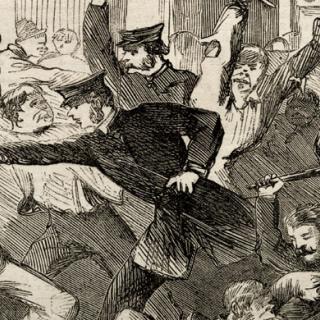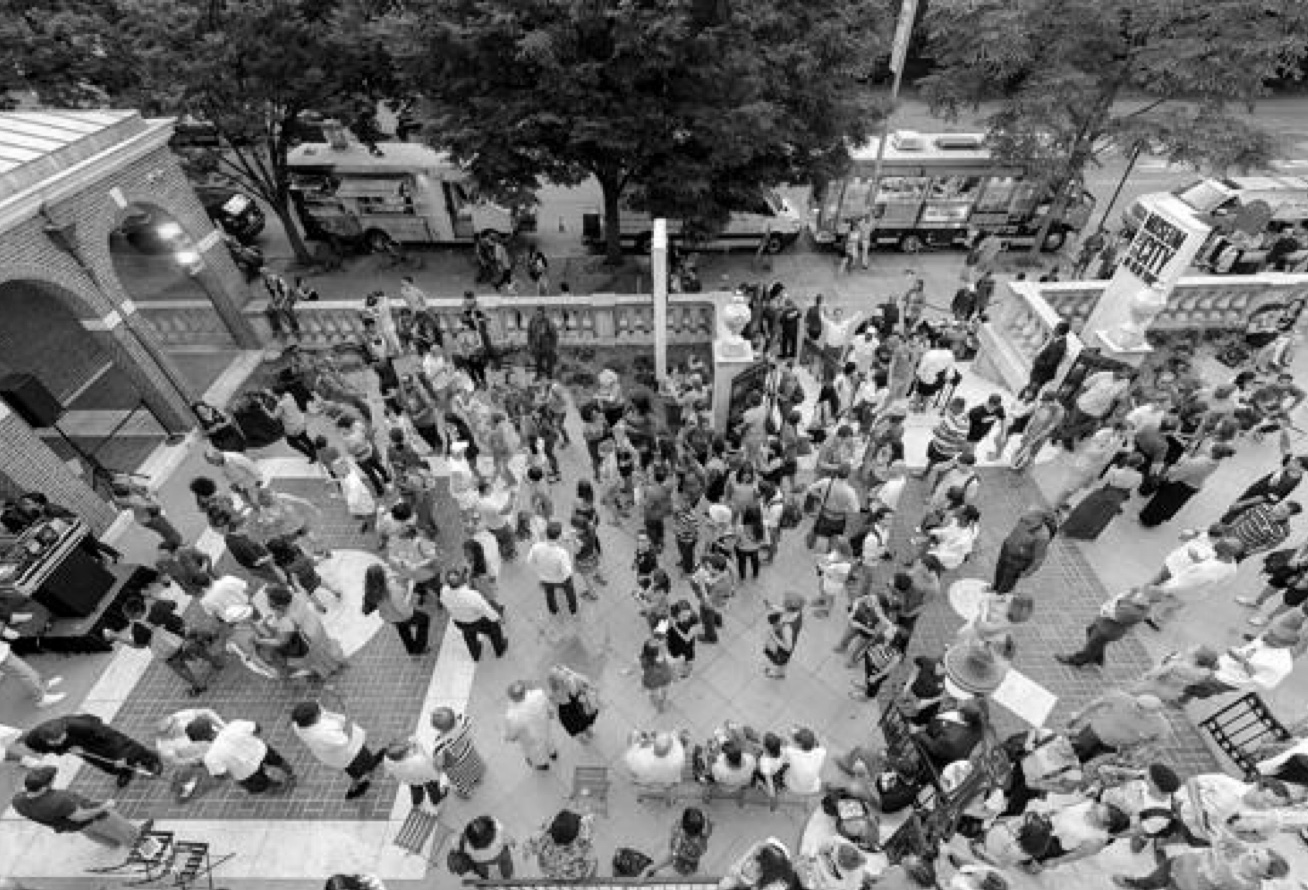Abolishing Slavery
The Battle Over Abolition
1830-1865
Ongoing
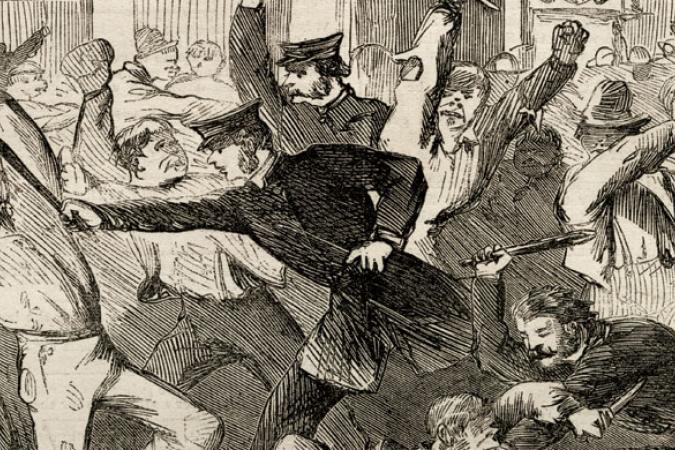
Back to Exhibitions
After New York State abolished slavery in 1827, a small group of New York City abolitionists, such as David Ruggles and Abby Hopper Gibbons, continued to work for an end to slavery nationwide. Both black and white activists denounced New Yorkers who profited from slavery through investment and trade, and they aided escaped slaves making their way to freedom via a secret network of New York “stations” on the Underground Railroad.
New York was also home to vigorous defenders of slavery, who viewed African Americans as inferior and warned that abolition would hurt the nation’s economy. Both sides took advantage of New York’s role as center of publishing and the arts, using the city’s printing presses, theaters, and music halls to advocate for an end to slavery or for white supremacy.
During the Civil War, tension in the city erupted in the Draft Riots of July 1863, which targeted African Americans and abolitionists and resulted in over 100 deaths and widespread destruction—the worst episode of mob violence in New York City history. Many African Americans fled New York during and after the riots, never to return.
With the defeat of the Confederacy and the end of the Civil War in 1865, New York’s abolitionists rejoiced over the end of slavery in the United States.
Yet New York remained a divided “Jim Crow” city for decades, with racial segregation of most businesses, housing, and schools. It would fall to later generations of activists to continue to challenge racism and civil inequality in New York.
Meet the Activists
Mary Lyons

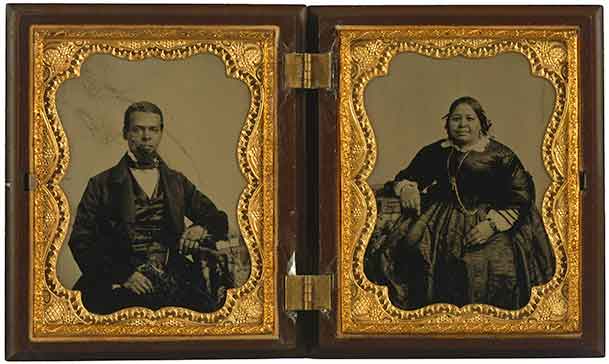
Mary Lyons
Abolitionists Albro and Mary Lyons ran a boardinghouse for black sailors near the East River docks that also doubled as an Underground Railroad station for hundreds of slaves escaping the South. Their boardinghouse was attacked during the Draft Riots, and the Lyons family, including children Maritcha, Therese, Pauline, and Albro, Jr., left New York for Rhode Island.
Image Info: ca. 1860, Courtesy Photographs and Prints Division, Schomburg Center for Research in Black Culture, The New York Public Library, Astor, Lenox and Tilden Foundations.
Abigail Hopper Gibbons
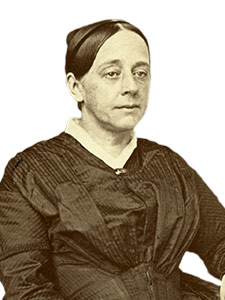
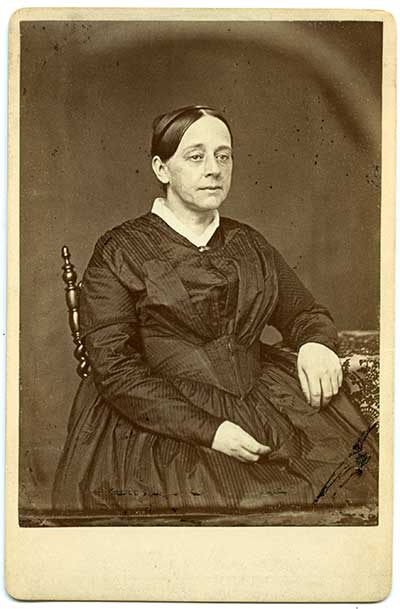
Abigail Hopper Gibbons
New York abolitionists like Abby Hopper Gibbons, daughter of prominent abolitionist Isaac T. Hopper, used oration, the printing industry centered in Manhattan, and direct action to fight slavery. Abolitionists were the targets of violence in 1834 and again in 1863. While Gibbons was in Virginia in 1863 supporting Union soldiers, the Draft Riots broke out in New York and a mob targeted Gibbons’s townhouse on West 29th Street, nearly burning the building down.
Image Credit: ca. 1870, Courtesy Friends Historical Library of Swarthmore College.
Frederick Douglass
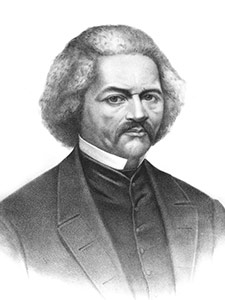
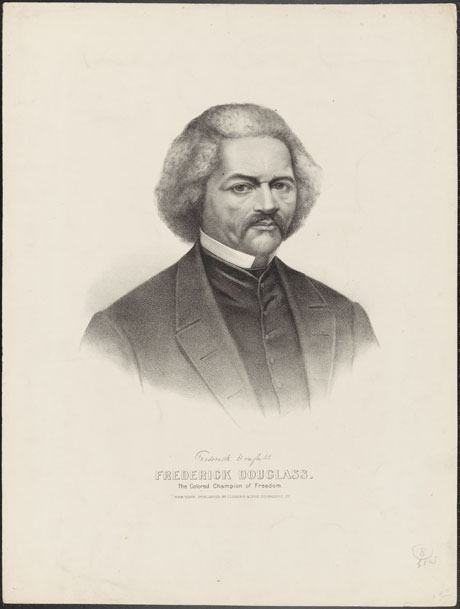
Frederick Douglass
Frederick Douglass, one of the most important activists of the 19th century, was born into slavery in Maryland. In 1838, at age 20, Douglass escaped to New York. He made his way to African-American abolitionist David Ruggles, secretary of the New York Committee of Vigilance, who housed a “station” on New York’s Underground Railroad. After settling in New Bedford, Massachusetts, Douglass gained his worldwide reputation for speaking out about the evils of slavery and also fought for woman suffrage.
Image Info: Currier & Ives, ca. 1873, Museum of the City of New York, Gift of Mrs. Harry T. (Natalie) Peters, 56.300.1011.
Objects & Images
Bill Of Sale Of Maria
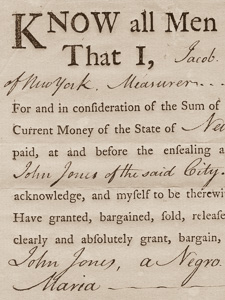
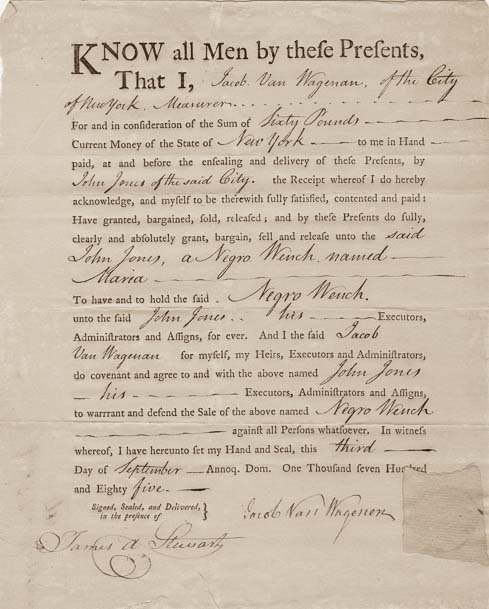
Bill Of Sale Of Maria
In the late 18th century, the New York City area was home to the heaviest concentration of slavery north of the Mason-Dixon Line. In Kings County, now the borough of Brooklyn, nearly 60% of households owned slaves in 1790. This 1785 bill portrays the sale of an enslaved woman named Maria from Jacob Van Wagenan to John Jones as an ordinary legal transaction. In 1799, Governor John Jay signed an act to gradually end slavery in the state, but full emancipation did not occur in New York until 1827.
Image Info: September 3, 1785, Museum of the City of New York, Gift of Mrs. Newbold Morris, 34.86.2.
Register Of Manumissions Of Slaves
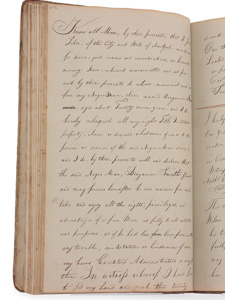
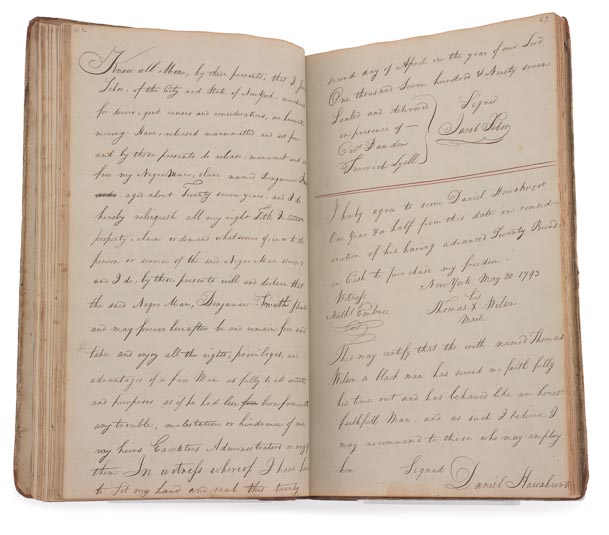
Register Of Manumissions Of Slaves
New York activists initially challenged the institution of slavery in the state itself. In 1785, a group of prominent white New Yorkers founded the New York Manumission Society to advocate for a gradual end to slavery by encouraging slaveholders to voluntarily free, or manumit, slaves. This register provided a record of slaves manumitted by society members.
Image Info: 1785-1809, New-York Society for Promoting the Manumission of Slaves, Museum of the City of New York, 33.295.
Leg Irons

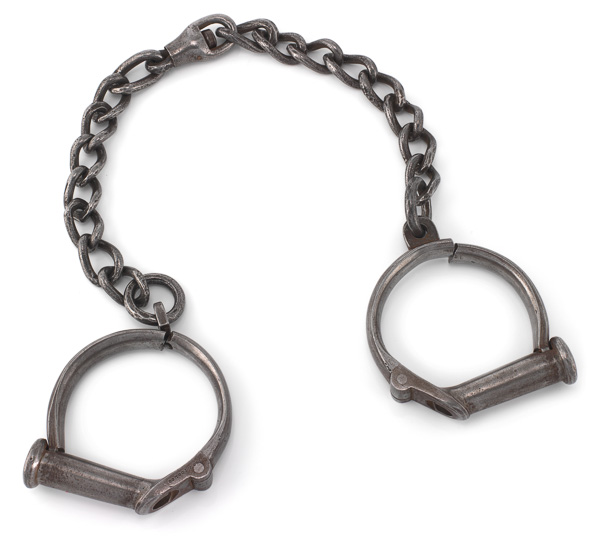
Leg Irons
According to family accounts, these shackles were given to Abby Hopper Gibbons in 1864 by an escaped slave named Sandy who had managed to flee while bound by them, and Gibbons brought them back from Maryland to New York. Abolitionists used such objects as propaganda to dramatize the abuses of slavery and rouse passions in support of their cause.
Image Info: 1860s, Museum of the City of New York, 53.99A-C.
The Disappointed Abolitionists
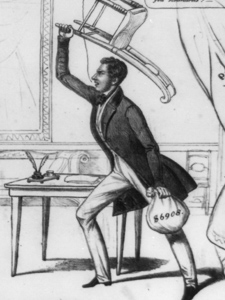
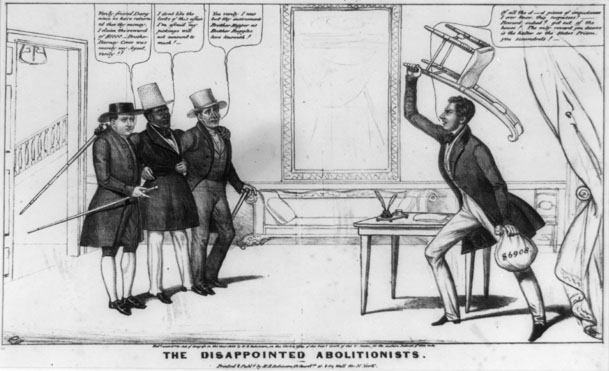
The Disappointed Abolitionists
In 1835, abolitionists established the New York Committee of Vigilance, which later became part of the Underground Railroad. Led by African-American abolitionist David Ruggles, the group protected escaped slaves from slavecatchers and often facilitated their subsequent journeys to upstate New York or New England. This cartoon questions the motives of Ruggles and others who attempted to negotiate with slave owner John Darg over the freedom of escaped slave Thomas Hughes.
Image Info: Edward Williams Clay, ca. 1838, Library of Congress, Prints & Photographs Division, LC-USZ62-90789.
Pamphlet Cover, Abraham Africanus I, His Secret Life, As Revealed Under The Mesmeric Influence. Mysteries Of The White House
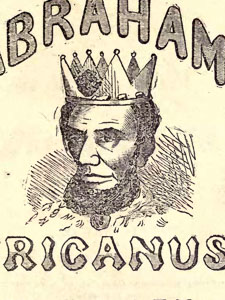
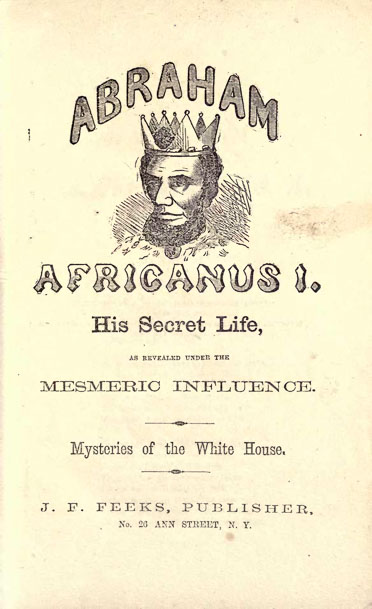
Pamphlet Cover, Abraham Africanus I, His Secret Life, As Revealed Under The Mesmeric Influence. Mysteries Of The White House
Pro-southern New Yorkers used the city’s printing presses to affirm white supremacy and the right of southerners to own slaves. Like other Manhattan publishers, J.F. Feeks issued anti-abolitionist and anti-Lincoln books from his Ann Street offices during the 1860s. In his satire Abraham Africanus I, published before the election of 1864, Feeks portrays Lincoln selling his soul to the devil in exchange for the right to become a despot. “Africanus” refers to Lincoln’s support for the Emancipation Proclamation.
Image Info: J.F. Feeks, Publisher, No. 26 Ann St., New York, ca. 1864, Courtesy University of Illinois Urbana.
Sheet Music Cover, “The Crow Quadrilles”
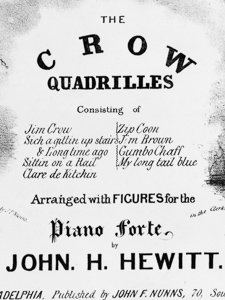
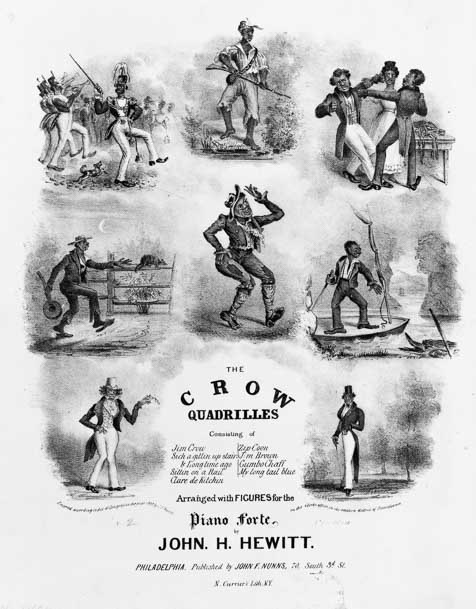
Sheet Music Cover, “The Crow Quadrilles”
In the 1830s, T.D. Rice and other white performers appeared in blackface at the Bowery Theater, where their songs and dances caricatured Southern blacks and presented a positive vision of slavery. The minstrel show became an important racist element in urban popular culture, embraced by New Yorkers opposed to abolition. Rice’s famous dance number, “Jump Jim Crow,” inspired minstrel songs such as “The Crow Quadrilles,” as well as the name for post-Civil War racial segregation.
Image Info: Arranged for the Pianoforte by Robt. Ashley. Esq. New York, Published by Endicott, 359 Broadway, 1839, Courtesy New-York Historical Society.
Tobacco Package Label
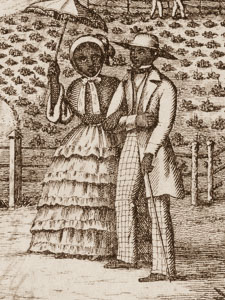
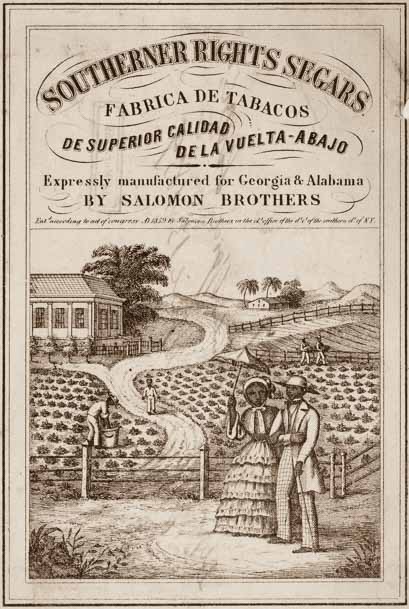
Tobacco Package Label
New York’s fortunes depended on the South’s cotton economy, in which Manhattan merchants and bankers were heavily invested, and on the consumption of New York goods by Southern consumers. Salomon Brothers, a Manhattan tobacco firm, marketed “Southerner Rights Segars” to white Southerners in 1859. However, the engraving seems to send a mixed message with its depiction of a prosperous-looking black couple in front of a plantation.
Image Info: ca. 1859, Courtesy Library of Congress, Prints & Photographs Division, LC-USZC4-12488.
Draft Cards
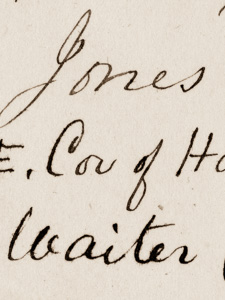
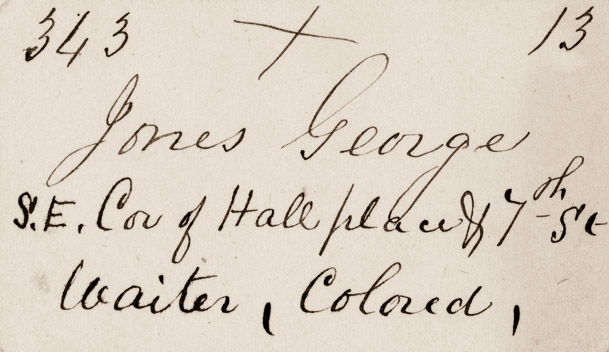
Draft Cards
These draft registration cards were among 3,600 found in a lottery wheel from the Seventh District draft office on the East Side. Federal draft officers were ready to start drawing names on July 13, 1863, when the Draft Riots began; https://www.viagrapascherfr.com/le-viagra-dangereux/ two other Manhattan draft offices were burned to the ground.
Image Info: 1863, Courtesy New-York Historical Society, Gift of Frederic C. Wagner, INV.7869J, INV.7869L, INV.7869N.
Letter From Frederick Man To A. P. Man
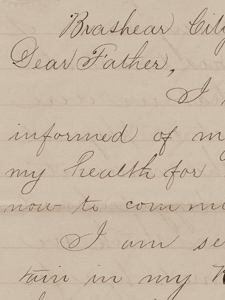
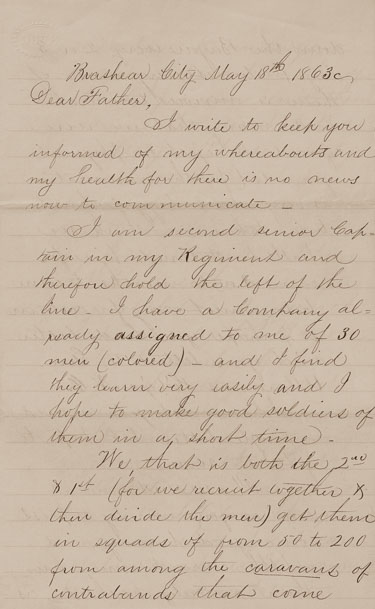
Letter From Frederick Man To A. P. Man
New Yorker Frederick Man, stationed with the U.S. army in Louisiana during the Civil War, regularly wrote to his father, A. P. Man, in Manhattan. In this letter, Man touches on everything from requesting brandy to describing the bayou and the African-American troops he oversaw. While many African Americans fought for the Union cause, their regiments were commanded by white officers such as Man.
Image Info: May 18, 1863, Museum of the City of New York, 42.220.23.
Charge Of The Police On The Rioters At The “Tribune” Office
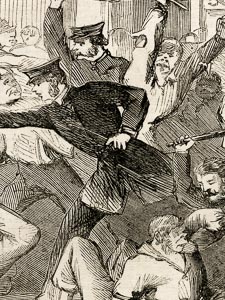
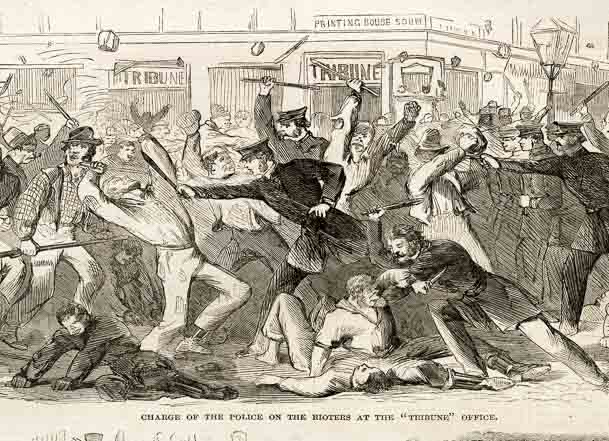
Charge Of The Police On The Rioters At The “Tribune” Office
This image shows New Yorkers fighting with police during the Draft Riots of July 1863. The government had announced the first draft to refill the ranks of the Union Army, but allowed any drafted man who paid $300 (a sum only the rich could afford) to hire a substitute to take his place on the battlefield. When the draft began on July 13, thousands of workers protested outside the city’s draft offices. After three days of rioting, the city was left with at least 105 dead, 306 wounded, and over 100 buildings burned—the worst civil uprising in the nation’s history.
Image Info: Harpers Weekly, August 1, 1863, Courtesy Steven H. Jaffe.
Noisemaker
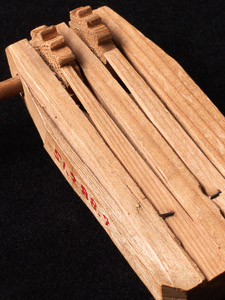
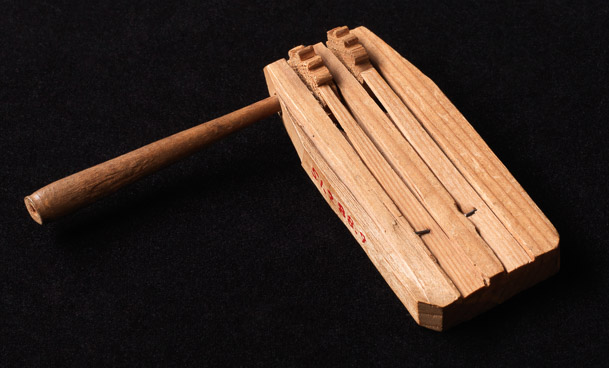
Noisemaker
According to the family who owned this rattle, it was used as a noisemaker by a rioter during the New York City Draft Riots. Crowds also roamed the city attacking abolitionists, wealthy Republicans, the police, and African Americans.
Image Info: ca. 1863, Museum of the City of New York, Gift of Mrs. W. W. Tillotson and Mrs. Spencer C. Devan, 51.288.9.
Officer David J. Pilsworth’s Sword And Scabbard
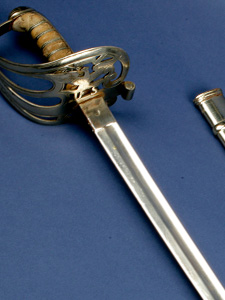
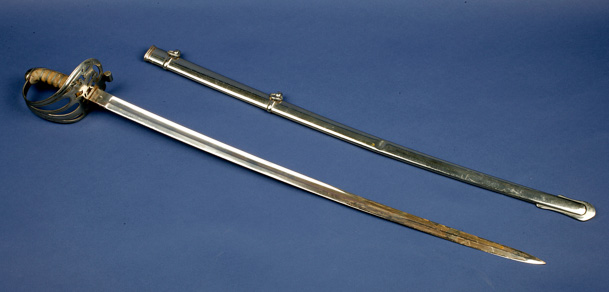
Officer David J. Pilsworth’s Sword And Scabbard
New York abolitionists were active in the movement to allow African Americans to fight for the Union cause. The African-American regiments were commanded by white officers, such as David J. Pilsworth, who served as a first lieutenant and then as a captain in the 20th Regiment, U.S. Colored Troops, raised in New York City in 1864.
Image Info: F. Horster, ca. 1860, Courtesy New-York Historical Society, Gift of Mrs. Frederick Leishman, 1962.22ab.
The Riots Of New York—the Rioters Burning And Sacking The Colored Orphan Asylum
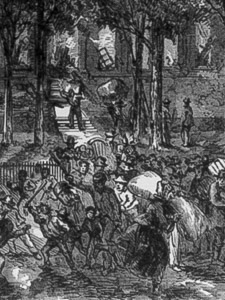
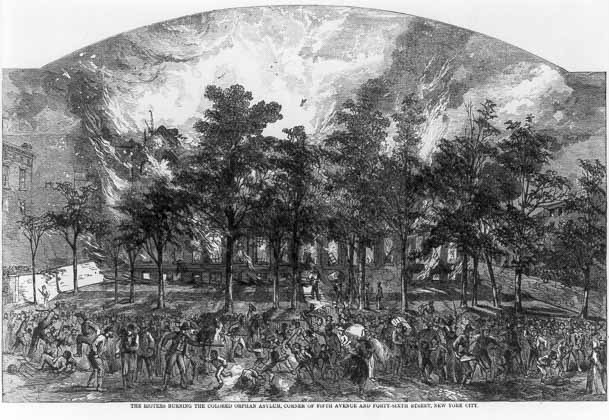
The Riots Of New York—the Rioters Burning And Sacking The Colored Orphan Asylum
Draft rioters attacked the Colored Orphan Asylum, a symbol of the link between Quaker abolitionists (who funded the orphanage) and the city’s African-American population. The children escaped, but the orphanage, located at Fifth Avenue and 43rd Street, burned to the ground.
Image Info: Harper’s Weekly, 1863, Courtesy Library of Congress, Prints & Photographs Division, LC-USZ62-47036.
The Man Of Words, The Man Of Deeds, Which Do You Think The Country Needs?
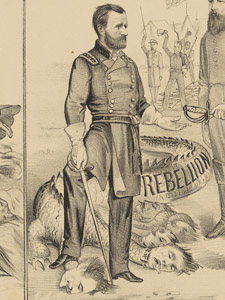
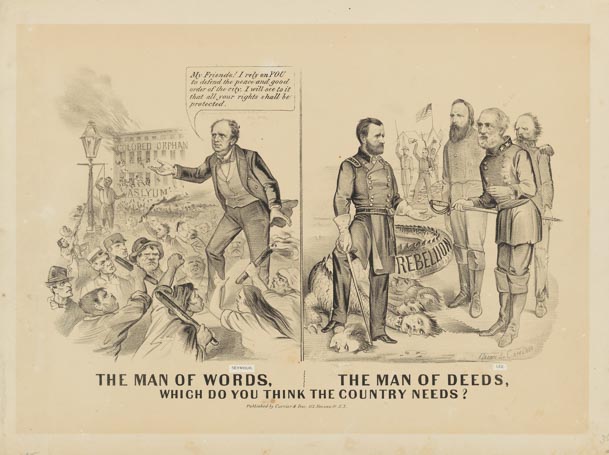
The Man Of Words, The Man Of Deeds, Which Do You Think The Country Needs?
This political cartoon from the Manhattan printing house Currier & Ives depicts the presidential election of 1868, between Horatio Seymour, Democratic candidate and former New York governor, and Republican candidate and Union army general Ulysses S. Grant. On the left side of the image, Seymour gives a speech preaching limited government as the Draft Riots wreak racially motivated havoc and violence in New York. On the other hand, Cameron depicts Grant, who had defeated Robert E. Lee and quelled the rebellion of the confederacy, as a man of action and order capable of leading the nation forward.
Image Info: John Cameron, printed by Currier & Ives, ca. 1868, Museum of the City of New York, Gift of Mrs. Harry T. (Natalie) Peters, 56.300.286.
Key Events
| Global | Year | Local |
|---|---|---|
|
First enslaved Africans are brought to New Amsterdam |
1625 | |
| 1827 |
After Governor John Jay passed a law of gradual emancipation in 1799, slavery is abolished in New York State |
|
| Founding of the American Anti-Slavery Society and the New York Anti-Slavery Society | 1833 |
|
|
|
1834 |
Anti-abolitionist riot in Manhattan |
| 1835 |
New York Committee of Vigilance established with David Ruggles as secretary; becomes part of the Underground Railroad |
|
| 1850 | Mass public meeting in New York supports the new Fugitive Slave Act | |
| 1863 | New draft law leads to riots in New York President Abraham Lincoln issues Emancipation Proclamation | |
| 1864 | New York raises its first African-American regiment to fight for the Union Army in the Civil War |
